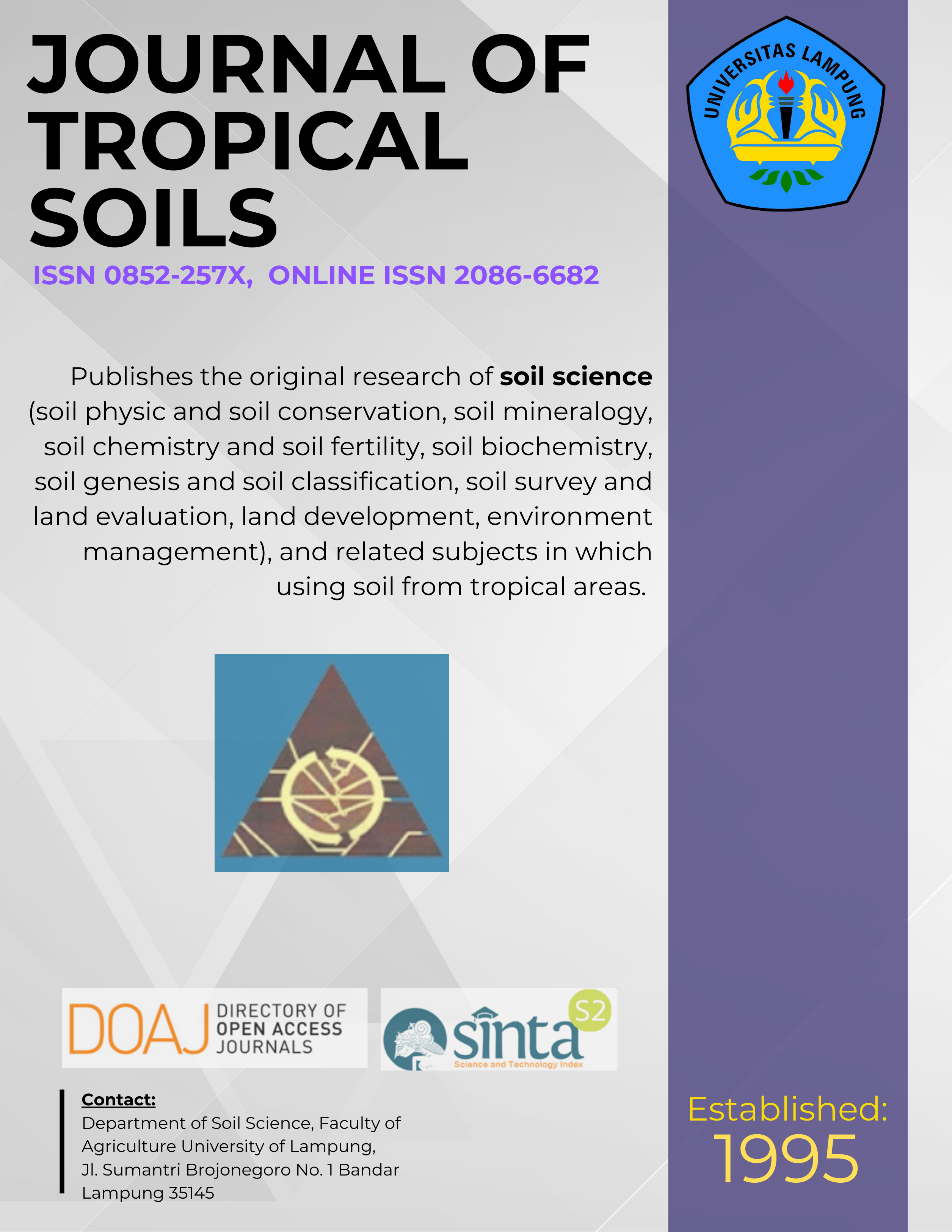Efektivitas Cacing Tanah Pheretima hupiensis, Edrellus sp. dan Lumbricus sp. dalam Proses Dekomposisi Bahan Organik
Main Article Content
Abstract
Downloads
Article Details
Issue
Section
License for Authors
Authors who publish with this journal agree to the following terms:
- Authors retain copyright and grant the journal right of first publication with the work simultaneously licensed under a Creative Commons Attribution License that allows others to share the work with an acknowledgement of the work's authorship and initial publication in this journal.
- Authors are able to enter into separate, additional contractual arrangements for the non-exclusive distribution of the journal's published version of the work (e.g., post it to an institutional repository or publish it in a book), with an acknowledgement of its initial publication in this journal.
- Authors are permitted and encouraged to post their work online (e.g., in institutional repositories or on their website) prior to and during the submission process, as it can lead to productive exchanges, as well as earlier and greater citation of published work (See The Effect of Open Access).
License for Regular Users
Other regular users who want to cite, distribute, remix, tweak, and build upon author’s works, even for commercial purposes, should acknowledge the work’s authorship and initial publication in this journal, licensed under a Creative Commons Attribution License.
How to Cite
References
Anwar, E.K. 2005. Manfaat cacing tanah Pheretima Hupiensis terhadap kelimpahan mikroorganisme Tanah. J. Wacana Pert. IV(2): 103-108
Anwar, E.K. 2007. Pengaruh inokulan cacing tanah dan pemberian bahan organik terhadap kesuburan dan produktivitas Tanah Ultisol. J. Tanah Trop. 12 (2): 121-130.
Balai Penelitian Tanah. 2005. Petunjuk Teknis Analisis Kimia Tanah, Tanaman, Air dan Pupuk. Badan Penelitian dan Pengembangan Pertanian Departemen Pertanian. 136 p.
Hendriksen, N.B. 1990. Leaf Litter Selection by Detritivor Geophagous Earthworms. Biol. Fertil. Soils 10: 17 21.
Listyawan B., Aprianto, D.A. Siddik, Z. Badruzzaman, dan Sudrajat. 1998. Teknologi VAP-BL. PT Vermi Alam Prima Lestari. Jl. Babakan Jeruk II No. 11 Bandung Indonesia.
Martin, A. 1991. Short and Long term Effects of the Endogeic Earthworm Millsonia anomala (Omodeo) (Megascolecidae, Oligochaeta) of Tropical Savanna, on Soil Organic Matter. Biol. Fertil. Soils 11: 234 238.
McCredie, T.A, C.A.Parker, and I. Abbott. 1992. Population Dynamic of The Earthworm Aporrectodea tropezoides (Annelida : Lumbricidae) in Western Australia Pasture Soil. Biol. Fertil. Soils 12: 285 289.
Monreal, C.M., R.P. Zentner, and J.A. Robertson. 1997. An Analysis of Soil Organic Matter Dynamics in Relation to Management, Erosion and Yield of Wheat in Long term Crop Rotation Plots. Can. J. Soil Sci. 77(4): 553 563.
Morarka M.R. 2005. GDC Rural Research Faundation. Vermiculture. Nermicast specifications. Physical, Chemical & Biological Specifications. RIICO Gem Stone Park. Tonk Road, Jaipur-302011, Rajasthan (India).
Parmelee, R.W., M.H. Beare, W. Cheng, P.F. Hendrix, S.J. Rider, D.A. Crossley Jr., and D.C. Coleman. 1990. Earthworm and Enchytraeids in conventional and no-tillage agroecosystems: A biocide approach to asses their role in organic matter breakdown. Biol. Fertil. Soils 10: 1-10.
Schwert, D.P. 1990. Oligochaeta: Lumbricidae, p.341-356. In D.L. Dindal (ed.), Soil Biology Guide. A Wiley Interscience Publication, John Wiley and Sons. New York.
Scheu, S. 1991. Mucus Excretion and Carbon Turnover of Endogeic Earthworms. Biol. Fertil. Soils 12: 217 220.
Soil Survey Staff, 1987. Kriteria Pengelompokkan kelas beberapa sifat kimia fisika tanah. Pusat Penelitian dan Pengembangan Tanah dan Agroklimat.

